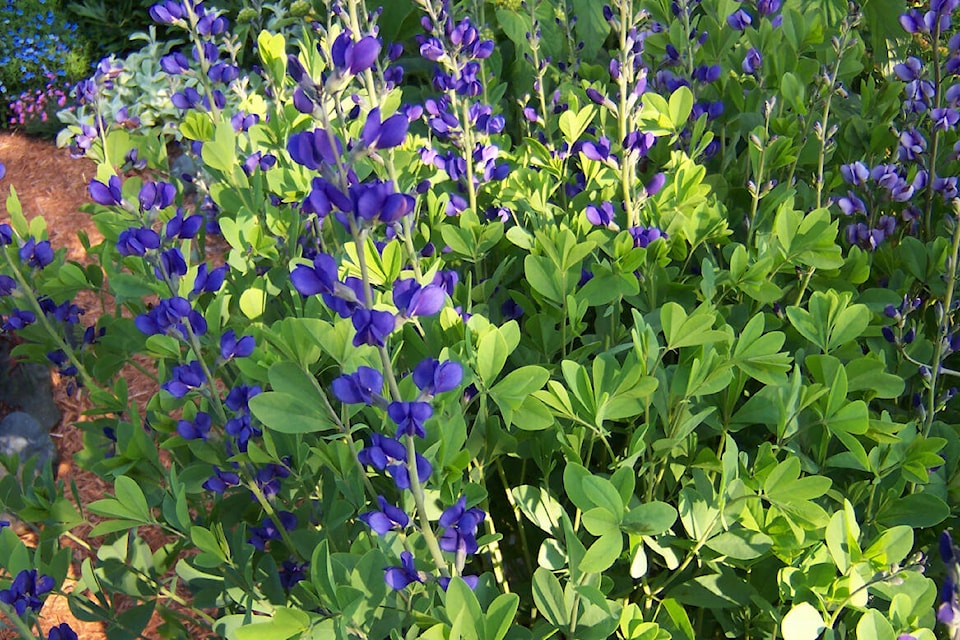By Leslie Cox
Special to the Record
One of my favourite spring pastimes is wandering through plant nurseries and garden centres. I love to see what new plant cultivars are being introduced and I am always on the lookout for any of the plants on my wish list.
Subscriptions to newsletters from a few plant suppliers and breeders often showcase some highly desirable new specimens that are not readily available. Hence, the wish list - a good excuse to stop at nurseries when I wave it at John and tell him I am just running in to see if they might have something on my list.
But new plant introductions can be tricky. We found this out about twenty years ago when John fell in love with a new tickseed introduction called Coreopsis ‘Limerock Ruby.’ One of its ‘claim to fame’ traits was the colour of the flower - a shade of red heretofore not on the Royal Horticultural Society’s colour wheel. That made this new beauty extra special in John’s mind. And, as luck would have it, one of our local nurseries had this plant in stock! That summer our lovely red-flowered plant enjoyed a prominent place in our landscape design for all to enjoy.
Fast forward to the following spring and John’s heightened anticipation for the re-emergence of ‘Limerock Ruby’ after its winter slumber. It was a no-show and naturally, John blamed himself for putting it in the wrong spot. Too much exposure, he thought, and promptly bought a second plant for the garden. Again, a stunning summer-long floral display.
Fast forward to another spring and a repeat of the previous year - no sign of ‘Limerock Ruby.’ Still not deterred, John purchased a third plant only to lose that one too over the following winter. So, I took up the challenge and did some research. Why was this perennial, which was hardy to at least Zone 7 as stated on the plant tag, not surviving in our garden?
The explanation I found back then was ‘Limerock Ruby’ was a hybrid cross between a perennial and an annual coreopsis with hardiness leaning towards annual. Disappointing, but at least John was assured his losses were no reflection on his gardening skills.
However, I now see the Missouri Botanical Garden website lists ‘Limerock Ruby’ as hardy in Zones 8-9. It also says, “originally introduced as quite winter hardy but has proven to be winter hardy only in the deep south.”
A lesson learned. You cannot always believe the information tags on new plant introductions. Some have not undergone a very long test period. And for that reason, I rely on the Great Plant Picks website from the Elisabeth C. Miller Botanical Garden in Seattle, WA.
It began as a program dedicated to testing a variety of plant species for their performance and durability assets in the Pacific Northwest climate. Knowledgeable horticulturalists evaluate the plant candidates nominated each year for testing, then meet at the end of the season to compare notes and prepare the Great Plant Pick (GPP) list.
Starting in 2001, there is now a substantial number of plants on the list which have passed extensive performance testing and each plant has its own page where its attributes, growth habit, and other notable points are laid out for the gardener.
And that is not all! The GPP plants have been divided into categories: shade, small gardens, foliage, native, Plants for a Better Planet and more.
But remember, the very latest new plant will not be on the GPP website yet. So, if you decide to buy a “must-have” on a whim, plant it with a little prayer. Half the fun in gardening is the success through trial and error.
Leslie Cox co-owns Growing Concern Cottage Garden in Black Creek. Her website is www.duchessofdirt.ca.
photos@comoxvalleyrecord.com
Like us on Facebook and follow us on Twitter
